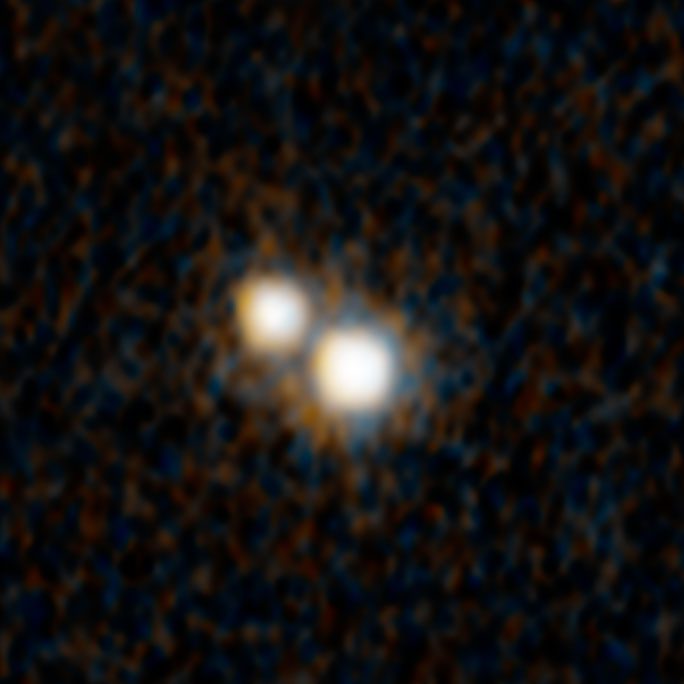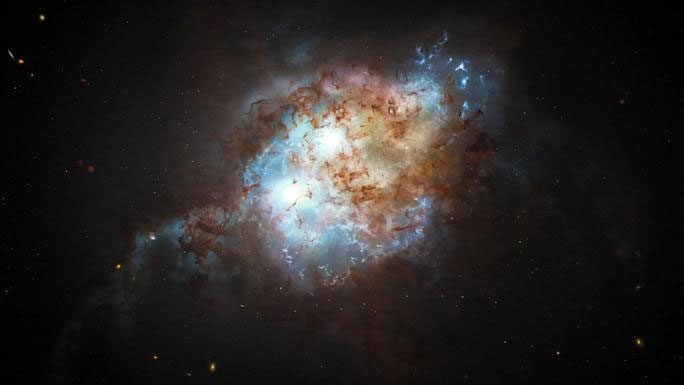An extraordinary image from 10 billion years in the past has been captured by the “eye” of the Hubble Space Telescope, revealing how an incredibly massive and powerful cosmic monster was born.
According to Live Science, the two objects recorded by NASA’s Hubble are two extremely large quasars. A quasar is referred to as a star-like bright object when viewed from Earth, but in reality, it is a masquerader.
They are often supermassive black holes, but unlike the silent and invisible black holes we are familiar with, these are actively consuming material. Gas and dust particles are accelerated to nearly the speed of light by the black hole’s gravitational pull, resulting in intense brightness.

Actual image of two extremely rare quasar pairs in Hubble data – (Photo: NASA).
The light from everything being consumed combines to make the black hole brighter than all the light from the Milky Way galaxy combined, making it appear like a bright star even from a great distance.
The double quasar captured by NASA has a record distance of 10 billion light-years.
Scientists hypothesize that such extremely bright quasars are signs of the early universe; however, the “twin” nature of these objects makes them particularly fascinating.
According to astronomer Yu-Ching Chen from the University of Illinois at Urbana-Champaign, the lead author of the recent study published in Nature on these unusual quasars, they are a rare pair in the early universe.
They considered the possibility that they could just be optical illusions, caused by Hubble’s lens inadvertently looking through a region of spacetime distorted by the gravitational pull of some massive object. But that is not the case; they are indeed twins – another observation from the WM Keck Observatory in Hawaii confirmed this.

Graphic representation of what you would see if you were closer to the “monsters” – (Photo: NASA/ESA/STScl).
Not only are they a rare double quasar, but they are also in the process of merging with each other. This merger will undoubtedly lead to a spectacular black hole collision, releasing an immense amount of energy and resulting in the birth of a supermassive black hole.
What is even more remarkable is that the images provided by Hubble or WM Keck are not images of the present, but rather a timeless gift from 10 billion years ago. An object 10 billion light-years away means that the light from it has traversed spacetime for 10 billion years to reach an instrument of Earth.
In other words, this extraordinary discovery has given us a direct glimpse of a rare monster from the dawn of the universe. It is possible that in the present, they have already merged long ago, and it is uncertain whether the monster born from that merger still exists.





















































